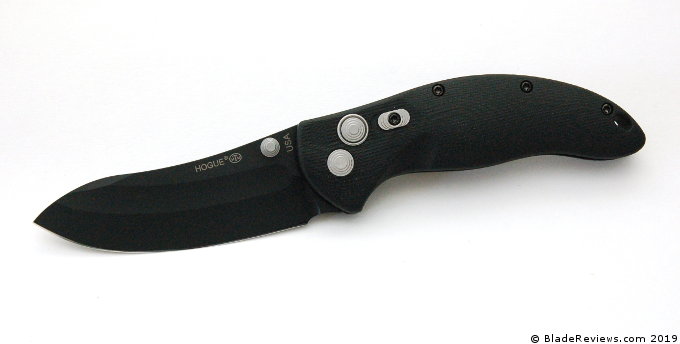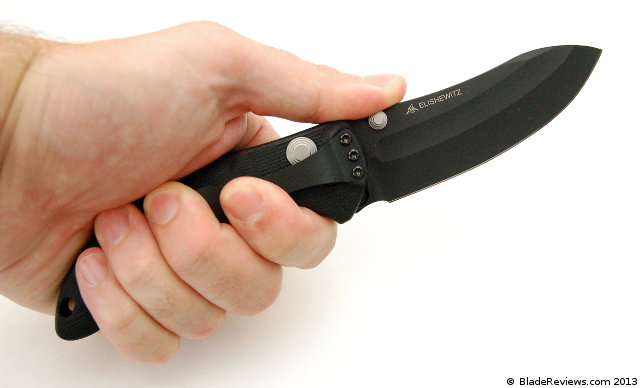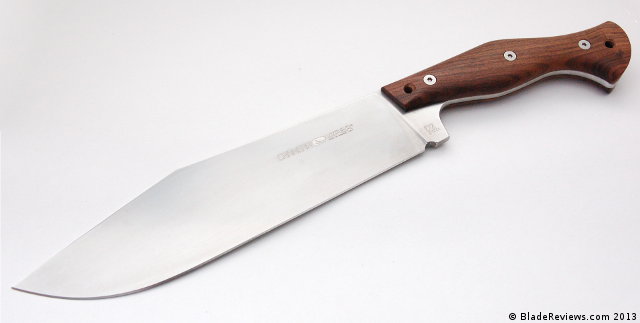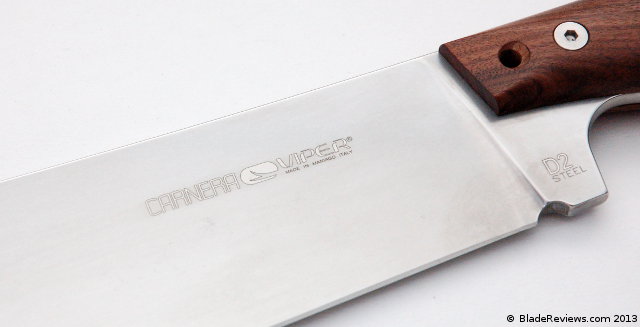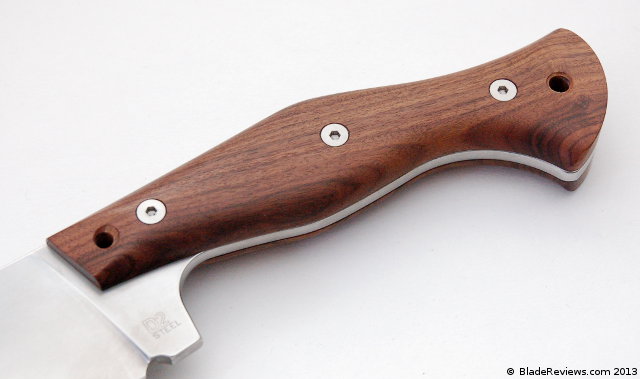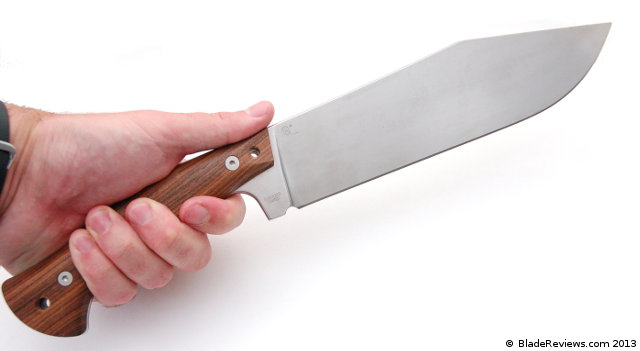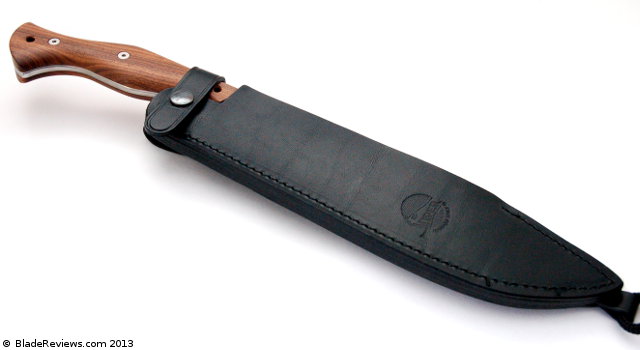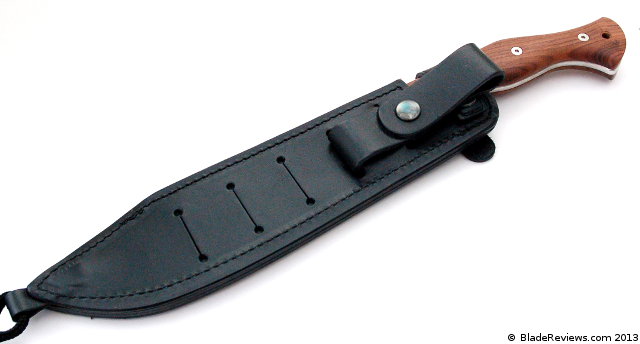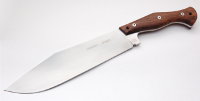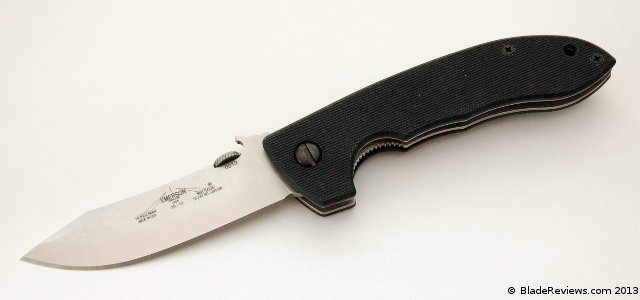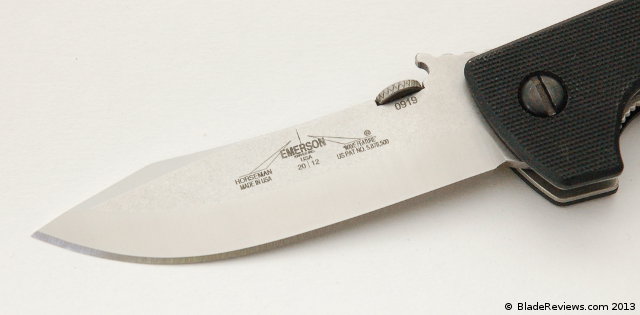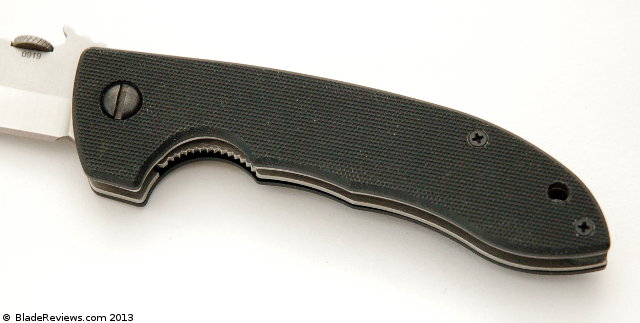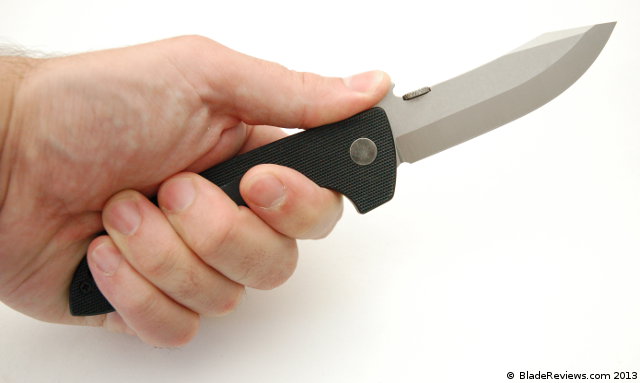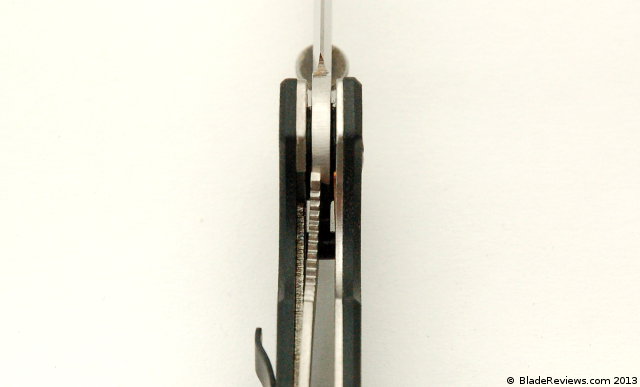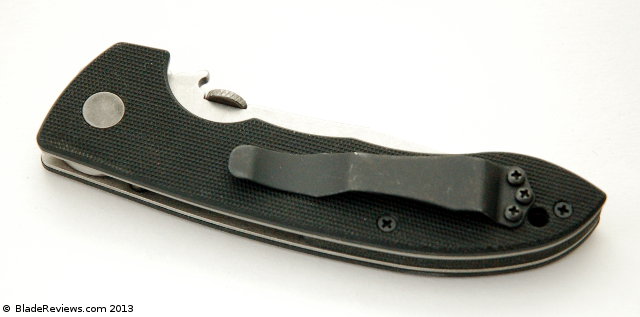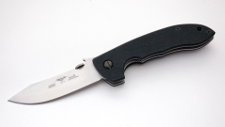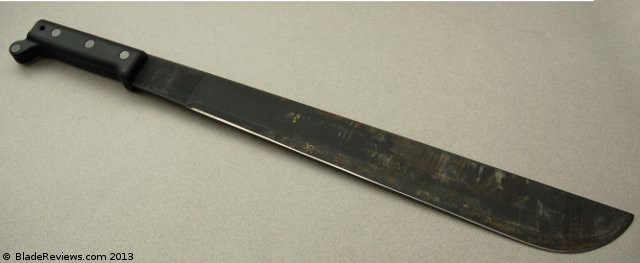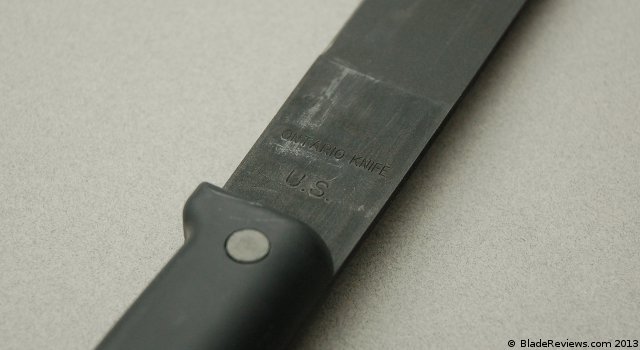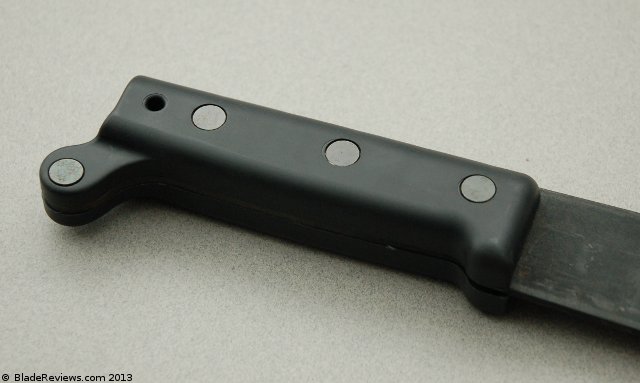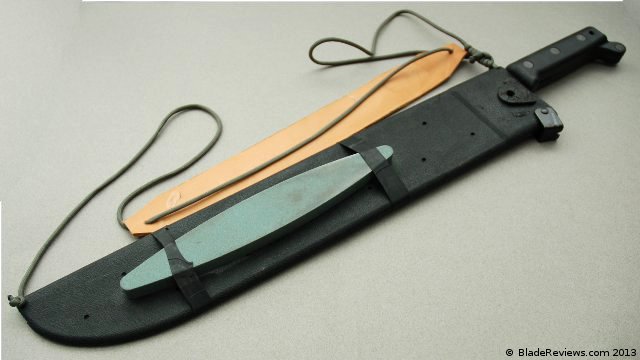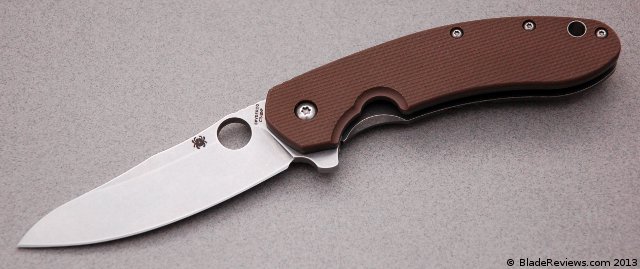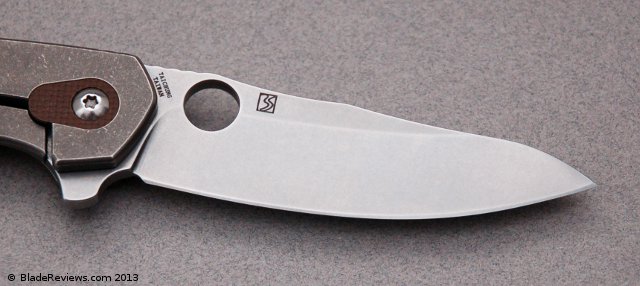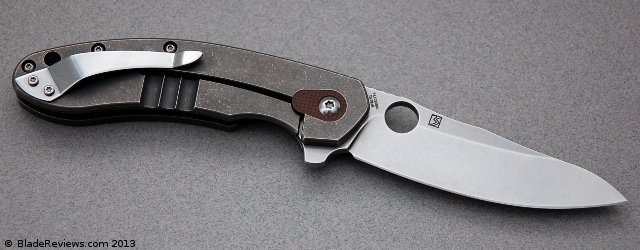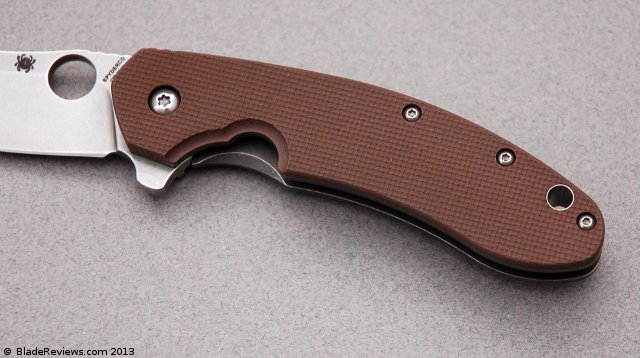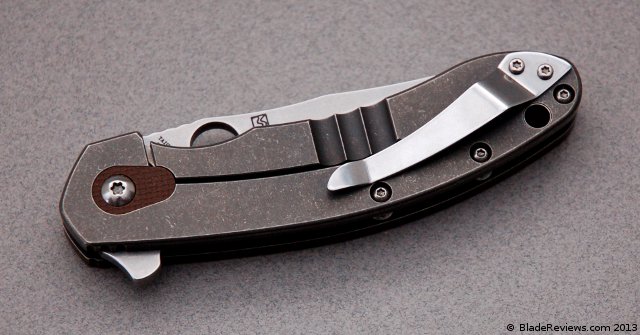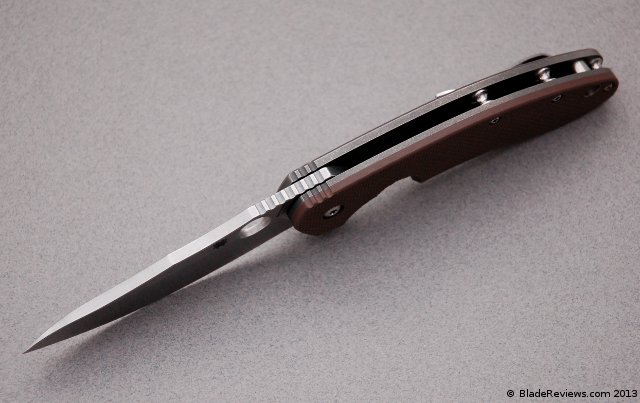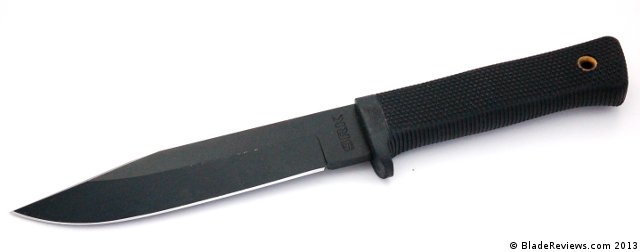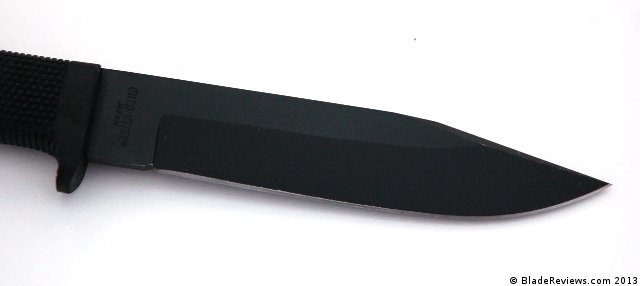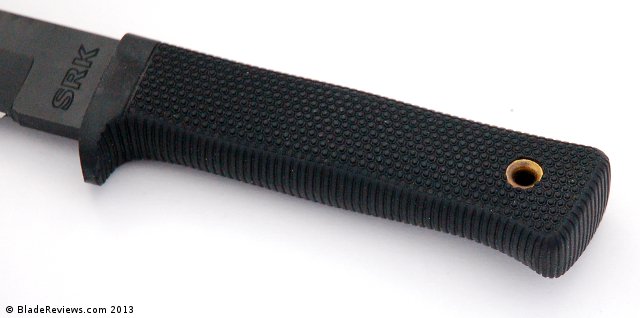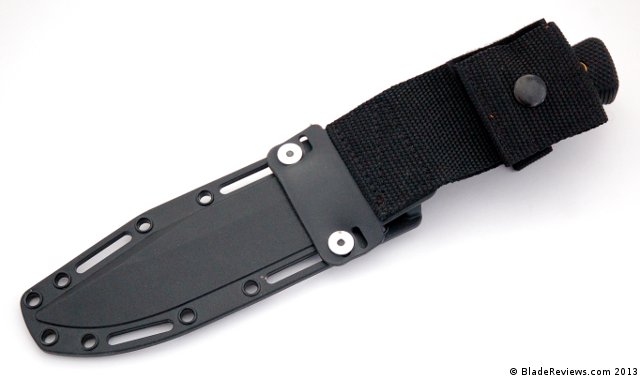Last Updated: August 4, 2019
It’s fun covering the latest knife trends. Case in point, the whole titanium flipper framelock schtick has has been an absolute blast. That said, I love it when a knife company completely bucks the trend and comes out with something that is bold, inventive and well executed.
No products found.
Without spoiling the review for you, the Hogue EX04 is just that knife, and is one of the more interesting blades I’ve had the pleasure of handling in 2013. I must not be the only one who feels that way, as the EX04 won American-made knife of the year at the 2013 Blade Show.
Designed by world renown custom knifemaker Allen Elischewitz the EX04 marries an intriguing design with the same precision manufacturing and technical excellence that I gushed over when I penned my first Hogue review on the EX01. From the custom hardware down to the mirror polished edge, there is a lot to discuss with this knife, so lets get right into it.
General Dimensions and Blade Details
The EX04 comes in 2 sizes, the 3.5″ bladed version, shown here, and a version with a 4″ blade. My knife has an overall length of 8″ and weighs 4.48oz. I trend towards smaller knives for daily use, and found the 3.5″ version a good choice for urban EDC. That said, there is certainly enough knife here for use as a dedicated work or “tactical” knife.
The EX04 comes in 2 blade shapes, an upswept variant (shown here) and one with a modified wharncliffe blade. Both feature a unique double grind; a first for a production knife. I spoke with Allen Elischewitz about this personally, and he told me Hogue went to great lengths to consistently pull this unique blade geometry. I can’t say it does much functionally (although the knife is ground thin and cuts extremely well), but it is definitely a very cool detail that I really enjoy.
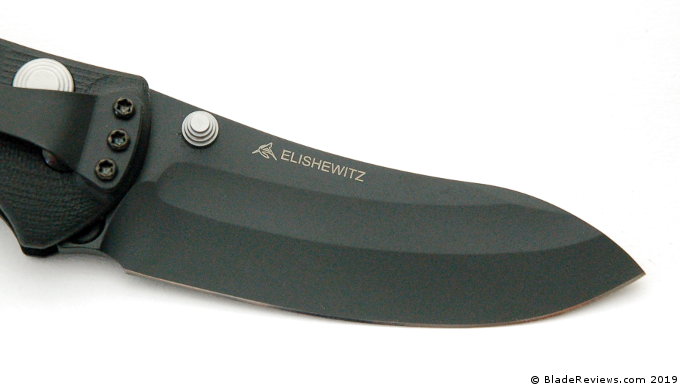
Hogue went with good ole 154CM which is an American stainless steel regular readers and knife aficionados should be well acquainted with. I have had a lot of good experience with 154CM, including Hogue’s 154CM when I reviewed the EX01 a while back. This time around I wanted to perform some more formal testing. The knife edge held up very well in performing a variety of EDC tasks including cutting rope, cardboard, and some basic carving. This is a useful blade shape made out of a nice balanced steel, and will provide years and years of service with very little maintenance.
Handle, Ergonomics, and Pocket Clip
The EX04 benefits from a full, sculpted G10 handle. There are no liners, although there are stainless steel bolsters that also function as washers. Like the rest of the knife the handle is superbly finished. The G10 is smooth and well contoured. The major hardware is silver and has been given a matte finish. Everything is just super refined on this knife – even the lanyard hole has been elegantly integrated.
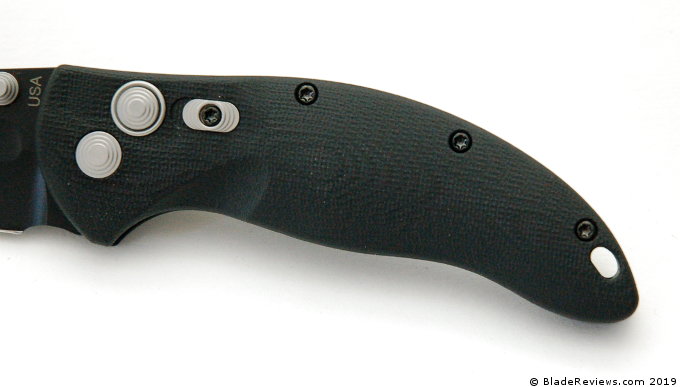
From an ergonomic standpoint the EX04 continues to impress me. The simple sloping curves of the handle are also 3d contoured and lightly textured, which provides a good balance of comfort and grip. There is a distinct absence of jimping on the knife, which makes it very comfortable and practical for normal use. Mall ninjas will cringe at this obvious “oversight”, but as someone that actually likes to use his knife I assure you that the lack of jimping is actually a good thing.
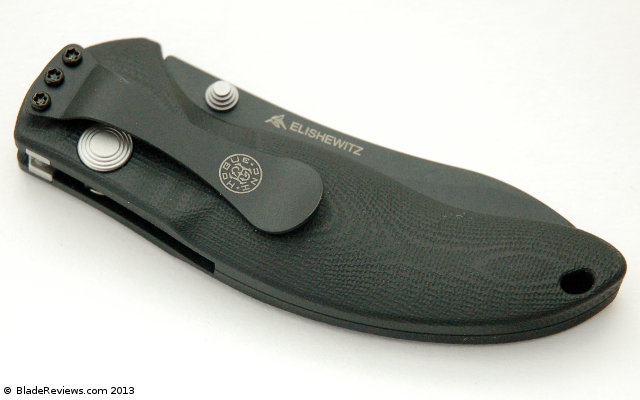
The pocket clip is the same large spoon style offering found on the EX01. This time it has been given a durable black coating for a more discrete appearance. Some will probably find issue with the bulbous nature of the clip, but I think it’s practical and works well. The knife carries nicely in the pocket – it’s slim and lightweight and is the kind of I knife that I want to carry. If I were to give the clip a demerit, it would be for the right side tip up only carry. I understand that there may have been some design limitations requiring this clip placement, but for me tip up carry would have been preferable.
Lock and Deployment
The EX04 has ambidextrous thumb studs for deployment. They are easy to get at and the knife snaps open smoothly and crisply with little effort. An interesting feature of this knife is the absence of any kind of washer or bearing system. Instead, the blade mates up directly to stainless steel bolster plates that both reinforce the knife and serve as the “washers” for the blade to glide against. In practice this works very well, as evidenced by the very smooth and satisfying action.
As I mentioned in the intro, the EX04 makes use of a button lock to secure the blade. It’s a nice departure from the liner and frame locks that creep into many of my folding knife reviews, and Allen has gone to great lengths to ensure that the EX04 came with a robust and reliable lock. My lock occasionally sticks a little bit. I am not sure if I need to clean it, lubricate it, or break it in more, but I do experience a little stick in the button lock from time to time.
The knife also comes with an external safety switch that locks the knife open. On the EX01 I found that the safety was too easy to engage, and would inadvertently lock the knife open, but I was relieved to find that they have made the safety button much more purposeful. It doesn’t engage accidentally, and you really need to consciously push it to lock open the knife.
Hogue EX04 Review – Final Thoughts
The EX04 is a beautiful knife. I gave it a glowing review, and I think it’s well deserved. The knife has a unique design, has been flawlessly executed, and is very practical to carry and use. If I were to make suggestions, it would be to find a way to enable tip up carry.
Besides that, this is nothing short of an awesome knife, one that I find a true pleasure to have in both my collection and my pocket. It is a premium offering, and commands a premium price tag, but this is another one of those instances where you get what you pay for.
At the time of updating this review (end of 2015) the EX-04 remains one of my favorite 3.5″ folders. It’s a beautiful tool that speaks to me on a number of different levels. Highly recommended.
No products found.
I recommend purchasing the Hogue EX04 at Amazon or BladeHQ. Thanks for checking out the review!
